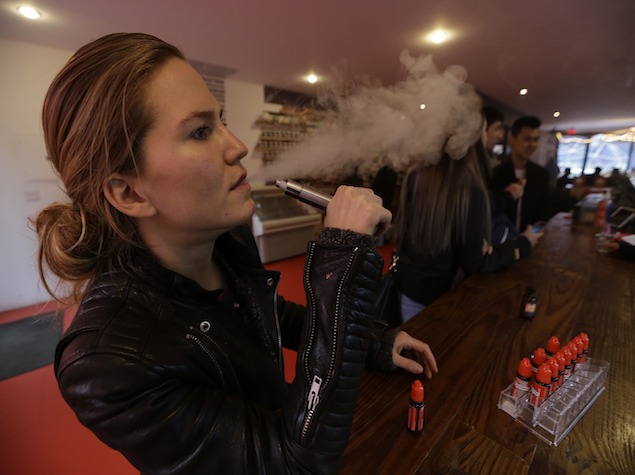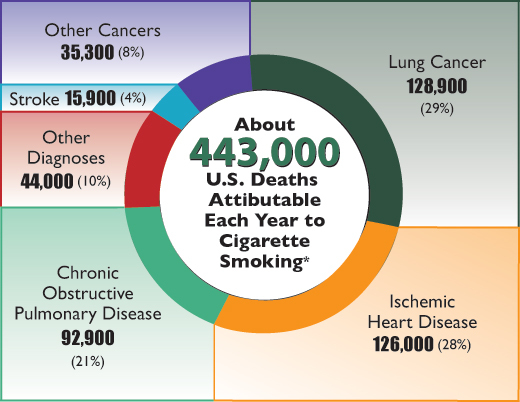 When change has come for tobacco during its nearly two centuries as a star of North Carolina’s economy, it usually has arrived at a leisurely pace.
When change has come for tobacco during its nearly two centuries as a star of North Carolina’s economy, it usually has arrived at a leisurely pace.
Not this time. The crop and products made from it face something that has gutted or transformed many other industries in recent years: a disruptive technology.
Electronic cigarettes are winning over smokers so quickly that some analysts predict the battery-powered newcomer could come out on top of traditional cigarettes within a decade. That’s unsettling for the farmers and manufacturers who still make North Carolina the national leader in tobacco production and rivaled only by Virginia in cigarette manufacturing.
E-cigarettes heat a liquid, usually containing the highly addictive stimulant nicotine, into a vapor that users inhale. Nicotine for the liquid is extracted from tobacco, but experts think it may take less tobacco to make the “juice” than required for an equivalent amount of traditional cigarettes.
That economic threat can also be an opportunity, partly because of the state’s decades of tobacco expertise and partly because of an odd bit of luck involving a plant called clary sage.
Some think that e-cigarettes may even offer a way to slow the gradual slide in tobacco sales for domestic use, a slide that began decades before the advent of e-cigarettes.
“It has been interesting to watch e-cigarettes move from almost a novelty to a trend,” said state Agriculture Commissioner Steve Troxler. “The bad news is, if it results in the decline of demand for traditional tobacco, then we are going to have a new set of problems, but the good news is, yes, we are poised to take advantage of it.”
This may be the key year in North Carolina’s effort to muscle into that leadership role. One reason is that Big Tobacco is becoming Big Vapor, too: Major tobacco companies are moving to get ahead of the potential shift in the market by selling e-cigarettes themselves, either by buying companies already in the business or starting their own. And two of the nation’s three largest tobacco companies are here.
With their deep pockets, intimate knowledge of the market, powerful research-and-development capacity and massive sales and distribution networks, they are in a position to quickly seize the majority of the market for e-cigarettes, said Bonnie Herzog, an analyst with Wells Fargo Securities who follows the e-cigarette and tobacco industries.
She and other experts believe that the big companies will market devices that simply work better, which will win over more smokers.
Greensboro-based Lorillard, the nation’s third-largest tobacco company, has been perhaps the most aggressive, snapping up an established e-cigarette company called Blu in 2012 for $135 million. Lorillard now has nearly half the national market share for e-cigarettes.
And the nation’s second-largest tobacco company, Reynolds American Inc., based in Winston-Salem, has launched its own e-cigarette subsidiary, R.J. Reynolds Vapor Co. It has developed an e-cigarette that, unlike nearly all its rivals, is made in the United States.
Reynolds is planning to launch its Vuse brand nationwide this summer. Its test-marketing results suggest the impact will be huge. In July, it started sales in Colorado and quickly gained more than half the market in that state. And RJR Vapor Co. President Stephanie Cordisco said in an interview that a second phase of test marketing that began in Utah in late January is showing similar results.
The largest tobacco company, Richmond, Va.-based Altria Group, has test-marketed its own e-cigarette, MarkTen, in two states and plans to go national in the second quarter of the year. Altria is the parent company of Philip Morris.
Transforming a market
The stakes are huge. Last year, Herzog forecast that by 2023, Reynolds could earn $5.2 billion in revenue from e-cigarettes and $3.1 billion from traditional ones. And it, Lorillard and Altria would all see about half their revenue from traditional cigarettes vanish by 2023.
If analysts such as Herzog are right, the tobacco companies have to get involved to protect not just their profits, but perhaps their future, said Blake Brown, a professor of agriculture and resource economics at N.C. State University and an extension economist who specializes in tobacco issues.
“They can’t afford not to do this,” he said. “If you’re a tobacco company, you don’t want to be the next Eastman Kodak. They didn’t understand that they were in the image business. They thought they were in the film business.”
This shift in history doesn’t seem lost on Big Tobacco. Lorrillard has a research and development team based in Silicon Valley. And at a Reynolds American media event in June, company President Daan Delen, tieless and in a sports jacket, roamed a stage at Pier 59 in New York, channeling the late Apple founder Steve Jobs as he unveiled Vuse. In interviews, Reynolds executives frequently use words such as “transformative” and “game-changing” for their new venture.
The drop in domestic tobacco consumption, which has come at an annual rate of 3 percent to 4 percent in recent years, had already been eroding cigarette manufacturing for decades. Tobacco manufacturing employment in North Carolina is about a quarter of what it was at its peak half a century ago.
Reynolds now declines to specify where its 5,200 U.S. workers are located, but in 2012 it reported that roughly 2,100 were in the Winston-Salem area. Like many other tobacco-related companies, it has seen its workforce drop substantially, from about 15,000 tobacco manufacturing workers in 1987 in the Winston-Salem area.
The chance to reverse that erosion isn’t lost on Reynolds executives.
“One of the things that I communicate to my team is that if we’re successful, we see jobs happening here,” Cordisco said. “We’re bringing jobs back to this company, and that’s what’s exciting.”
She declined to give employment numbers but said that RJR Vapor Co. has created jobs in several states, some within the company, some with suppliers. In Kansas, it makes the cartridges. In its Tobaccoville manufacturing complex near Winston-Salem, it does the final packaging.
For now, the number of employees working for e-cigarette companies is relatively small because the industry is small, said Herzog, the analyst.
“Just to put it in perspective, retail sales (of e-cigarettes) were $1.8 billion in the U.S. last year, estimated, and that compares to an $85 billion combustible cigarette market,” she said. “But I certainly expect that consumption of e-cigs will pass consumption of combustible cigarettes in the next 10 years, and as that trajectory continues, absolutely you’re going to see companies get larger and hire more employees.”
For now, most e-cigarette companies, including Lorillard’s Blu, have their devices made in China, though Blu gets its liquid from a company in Wisconsin.
Herzog believes that it’s likely others will follow Reynolds’ path and move the manufacturing to the United States, where they can better control quality. Federal regulations, which are widely expected to come soon from the U.S. Food and Drug Administration, may include standards that would push more companies to make e-cigarettes in the U.S., she said.
The magic of clary sage
The potential upside to e-cigarettes also may include farmers.
For much of tobacco’s history in North Carolina, the state’s climate and soil were natural advantages that helped them produce a product of high quality and good taste. Farmers could fend off tobacco produced in countries where the labor was cheaper, or the climate so hot year round that two crops were possible.
But one potential competitive advantage North Carolina farmers have for any e-cigarette comes from good luck: Avoca, a large botanical extraction company, is located in Bertie County near Edenton, not far from many of the state’s top tobacco-producing counties.
There, it mainly has been extracting a fixative from a type of sage that helps scents last longer in perfumes and things such as laundry products. Farmers are now growing thousands of acres of the purple-flowered clary sage in the area.
Last fall, Richmond, Va.-based Universal Leaf, the top vendor of leaf tobacco in the world, and Avoca announced a joint venture called AmeriNic that’s already extracting nicotine from tobacco and is planning to begin commercial sales this year, company leaders said in an emailed response to questions.
The partners believe it to be the only operation in the country that extracts and purifies nicotine, an addictive stimulant in tobacco and a crucial ingredient in most e-cigarette “juice.”
Farmers are watching the venture closely.
“We think there is an opportunity, and we want to be the ones to fill that need,” said Graham Boyd, executive vice president of the Tobacco Growers Association of North Carolina.
It’s unclear how much tobacco e-cigarette makers will need and where they will get it. In its response to questions, Universal Leaf declined to say where it plans to get its tobacco for extraction but said that its efforts to breed plants specifically for nicotine production were being done here, at least in part.
“At this time, we are evaluating various sourcing options,” the company said. “Given our long history of purchasing quality tobaccos in North Carolina, we have included farms in the state as part of our R&D effort.”
The need for nicotine
Dr. Loren Fisher, an associate professor of crop science and extension tobacco specialist at NCSU, said one advantage that North Carolina has in trying to reap some benefit from e-cigarettes is its centuries of hard-won knowledge about breeding and growing tobacco. He thinks it will be relatively easy to develop plants that are efficient little green factories for producing large amounts of nicotine, as opposed to the current goals of taste and the quality of the leaves.
“I think we know right now what it takes to breed plants that would produce more nicotine,” he said.
For the short term, growing tobacco for nicotine could turn out to be mainly an additional market, he said, rather than just a way to replace declining sales form the domestic market. That’s because most of the state’s tobacco crop is now exported and its foreign customers are feeling less effect from e-cigarette competition.
For now, Troxler said, North Carolina’s tobacco crop seems to have stabilized, mainly because of overseas demand. Chinese demand for tobacco is rising, and last summer China’s national tobacco company opened an office in Raleigh as a base for its American tobacco-buying operations.
But foreign demand may not remain steady, particularly if e-cigarettes also start making strong inroads overseas.
The pace of the e-cigarette revolution could be affected by the nature of federal regulations that are believed to be in the pipeline. It also could be slowed by factors such as the emergence of other new kinds of tobacco products, or accelerated by something that Big Tobacco is likely to prove good at: advances in technology that make e-cigarettes even more attractive to smokers, Herzog said.
It also could be slowed if e-cigarettes are hit with taxes by governments desperate to make up for lost revenue from the drop in traditional cigarette sales.
Cigarettes are the largest cause of preventable deaths; e-cigarettes are believed to be significantly safer, but there is little research on their health effects. There is a debate among public health officials about how much to encourage smokers to switch to e-cigarettes by doing things like keeping taxes on them low. Some worry that the devices, with available flavors such as custard, berry or apple pie, encourage use by children.
Brown, the NCSU tobacco economist, believes that something will bring big changes to the market, though he says it’s still too early to say that it will be e-cigarettes.
Philip Morris, he noted, recently announced that it’s investing $680 million in a new Italian plant that would make noncombustible cigarettes, devices in which tobacco is heated just enough to give off inhalants, but not enough to burn.
“There may not be smoking in five years, but there will be something different, whether it’s e-cigarettes or noncombustibles or something, but it’s going to be changed dramatically,” Brown said. “And to predict how it will change, and how that will affect manufacturing is difficult right now.”
 First, my own experience as a doctor – I have found e-cigarettes to be one of the most effective methods of cutting down or quitting smoking for recalcitrant smokers.
First, my own experience as a doctor – I have found e-cigarettes to be one of the most effective methods of cutting down or quitting smoking for recalcitrant smokers.





 There’s a new product on the market that offers a chance to find a workable middle ground in America’s smoking debate. Called vapes, electronic cigarettes or e-cigarettes, they deliver nicotine with a big twist: Instead of burning tobacco, they vaporize – hence the nickname – a nicotine-containing liquid.
There’s a new product on the market that offers a chance to find a workable middle ground in America’s smoking debate. Called vapes, electronic cigarettes or e-cigarettes, they deliver nicotine with a big twist: Instead of burning tobacco, they vaporize – hence the nickname – a nicotine-containing liquid.

